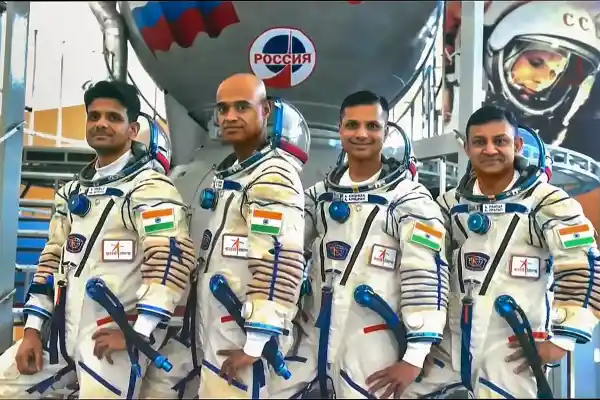Group Captain Shubhanshu Shukla’s 18-day stint aboard the International Space Station (ISS) as part of Axiom Mission-4 has confirmed the reliability of India’s astronaut screening and selection methods. Air Vice Marshal Anupam Agarwal, Assistant Chief of the Air Staff (Medical), said on Sunday that the successful training of Shukla and the Gaganyaan crew proved India’s systems were effective, despite having been built from scratch.
Building From Scratch
When the Gaganyaan programme was cleared in December 2018, India had no existing data to draw upon. “There are numerous medical and physical factors to consider, but since this is our first attempt, we had to create the process ourselves,” Agarwal said. The Institute of Aerospace Medicine played a central role, as no country was willing to share information in this sensitive area.

Multiple Layers of Validation
The four chosen Gaganyatris—Group Captains Shukla, Prasanth Balakrishnan Nair, Ajit Krishnan, and Angad Pratap—trained in Russia, while Shukla was also evaluated in the US as part of Axiom-4. His mission made him the first Indian on the ISS and only the second Indian in space. He returned on July 15 after completing the commercial flight run by Houston-based Axiom Space in partnership with NASA, ISRO, ESA, and SpaceX.
Defence Minister’s Praise
On Sunday, Defence Minister Rajnath Singh felicitated the astronauts in Delhi, calling them “gems of the country” and symbols of India’s aspirations. He hailed Shukla for compressing two-and-a-half years of training into just two-and-a-half months, describing his feat as both a technological milestone and a message of perseverance. Singh also highlighted Shukla as a bridge between military and civilian space efforts.
Gaganyaan Nears Final Phase
India’s first human spaceflight is targeted for early 2027. The human-rated LVM3 rocket, crew escape system, and crew modules are in the final stages of testing. The four Indian Air Force pilots are continuing mission-specific training in India, with close monitoring of their physical and psychological health. The mission has a financial outlay of Rs 20,193 crore. India has also set long-term goals: a Bharatiya Antariksha Station by 2035 and a moon mission by 2040.
Shukla’s Experience in Space
Recalling his launch on June 25 from Kennedy Space Center, Shukla described the intensity of going from zero to 28,500 km/hr in just over eight minutes. Life on the ISS brought unique challenges, from learning how to eat and sleep in microgravity to handling the station’s tricky toilet system.
As mission pilot, Shukla was responsible for spacecraft controls alongside commander Peggy Whitson and astronauts from Poland and Hungary. He was trained in medical care, engineering, science experiments, photography, and communication. He carried out seven India-led experiments in areas including agriculture and cognitive science, and captured striking images of India from orbit.
Teamwork at the Core
Training also included survival drills and team-building, such as a kayaking expedition off the Mexican coast. “You have to be a team player. If you are not, you are not fit for spaceflight,” Shukla said.
From Reserved Child to Role Model
Once a shy boy inspired by Rakesh Sharma’s 1984 spaceflight, Shukla now finds himself signing autographs and inspiring students. “It feels wonderful to see the excitement for space and for India’s space programme,” he said.
